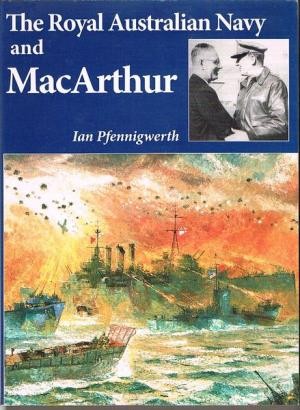By 1945, MacArthur’s forces had advanced from Papua to the Philippines and to Borneo. The majority of the troops, supplies, and equipment for this campaign were transported by sea, and MacArthur’s success was based on 22 amphibious assaults.
Soldiers and Marines did the ground fighting and MacArthur’s air forces eventually ruled the skies, but it was the ships of the United States and Australian navies that delivered them to the battlefronts and supported them.
This book reveals much of the RAN’s war little reported upon. Tiny by comparison with the USN, the RAN more than compensated by commanding all the hydrographic surveying for MacArthur’s shipping and amphibious assaults, and shouldered the major responsibility for protecting MacArthur’s convoys. The RAN bombarded enemy positions, drove off Japanese reinforcements and harassed enemy coastal shipping.
RAN Coast Watchers collected crucial intelligence; Beach Commandos directed men and material across assault beaches, often delivered by RAN landing ships. RAN ships shuttled troops and equipment, rescued downed airmen and swept enemy mines. Australian sailors fought and sometimes died in battles against kamikaze aircraft in the Philippines and in routing the Japanese Fleet at Surigao.
Wherever MacArthur’s troops fought, the RAN was there. When the fighting stopped the RAN facilitated the surrender of Japanese forces and finally brought our troops home. pp. 208 illusts #0419
- MacArthur, Douglas.
- Australia. Royal Australian Navy — History — World War, 1939-1945.
- World War, 1939-1945 — Naval operations, Australian.
- World War, 1939-1945 — Campaigns — Pacific Area.
- World War, 1939-1945 — Pacific Area.
